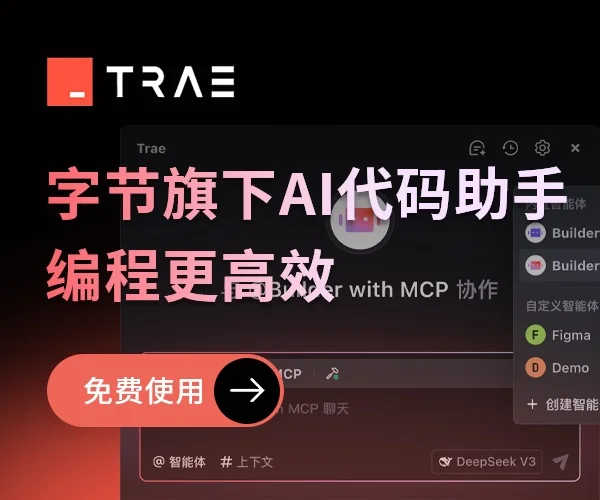C#动态调用WCF接口,两种方式任你选。
写在前面
接触WCF还是它在最初诞生之处,一个分布式应用的巨作。 从开始接触到现在断断续续,真正使用的项目少之又少,更谈不上深入WCF内部实现机制和原理去研究,最近自己做一个项目时用到了WCF。 从这个小项目中我学会了两个地方: 1、利用IIS部署WCF服务,也就是大家接触到的发布SVC文件。2、动态调用WCF接口。
在这个项目中接触WCF时遇到的其实不仅仅是这两个问题,甚至连IIS支持SVC文件也让我折腾了好几把,IIS都重新卸载了两次。 我在这篇文章里用两种方式来实现。
如何使用
1、第一种方式比较简单,而且也是大家喜欢的,因为不需要任何配置文件就可解决,只需知道服务契约接口和服务地址就可以调用。
2、使用Invoke的方式,但是需要在调用客户端配置WCF,配置后在Invoke类里封装服务契约接口即可。
客户端调用DEMO
//第一种方式 string url = "http://localhost:3000/DoubleService.svc"; IDoubleService proxy = WcfInvokeFactory.CreateServiceByUrl<IDoubleService>(url); int result = proxy.Add(1, 3); //第二种方式
int result1 = WCFInvoke.Invoke(t => t.Add(1, 3));
<system.serviceModel>
<behaviors>
<endpointBehaviors>
<behavior name="NewBehavior">
<dataContractSerializer maxItemsInObjectGraph="65536000" />
</behavior>
</endpointBehaviors>
</behaviors>
<bindings>
<basicHttpBinding>
<binding name="BasicHttpBinding_IDoubleService"
closeTimeout="01:00:00"
openTimeout="01:00:00"
sendTimeout="01:00:00"
receiveTimeout="01:00:00"
maxBufferSize="2147483647"
maxBufferPoolSize="524288"
maxReceivedMessageSize="2147483647">
<readerQuotas maxDepth="128" maxStringContentLength="2147483647" maxArrayLength="16384" maxBytesPerRead="4096" maxNameTableCharCount="16384" />
</binding>
</basicHttpBinding>
<netMsmqBinding>
<binding name="NetMsmqBinding_IAsyncSender">
<security mode="None" />
</binding>
</netMsmqBinding>
</bindings>
<client>
<endpoint address="http://localhost:3000/DoubleService.svc"
binding="basicHttpBinding"
bindingConfiguration="BasicHttpBinding_IDoubleService"
contract="DoubleStone.WebHost.IDoubleService"
name="BasicHttpBinding_IDoubleService" />
</client>
</system.serviceModel>
第一种调用方式
public class WcfInvokeFactory
{
#region WCF服务工厂
public static T CreateServiceByUrl<T>(string url)
{
return CreateServiceByUrl<T>(url, "basicHttpBinding");
}
public static T CreateServiceByUrl<T>(string url, string bing)
{
try
{
if (string.IsNullOrEmpty(url)) throw new NotSupportedException("This url is not Null or Empty!");
EndpointAddress address = new EndpointAddress(url);
Binding binding = CreateBinding(bing);
ChannelFactory<T> factory = new ChannelFactory<T>(binding, address);
return factory.CreateChannel();
}
catch (Exception ex)
{
throw new Exception("创建服务工厂出现异常.");
}
}
#endregion
#region 创建传输协议
/// <summary>
/// 创建传输协议
/// </summary>
/// <param name="binding">传输协议名称</param>
/// <returns></returns>
private static Binding CreateBinding(string binding)
{
Binding bindinginstance = null;
if (binding.ToLower() == "basichttpbinding")
{
BasicHttpBinding ws = new BasicHttpBinding();
ws.MaxBufferSize = 2147483647;
ws.MaxBufferPoolSize = 2147483647;
ws.MaxReceivedMessageSize = 2147483647;
ws.ReaderQuotas.MaxStringContentLength = 2147483647;
ws.CloseTimeout = new TimeSpan(0, 30, 0);
ws.OpenTimeout = new TimeSpan(0, 30, 0);
ws.ReceiveTimeout = new TimeSpan(0, 30, 0);
ws.SendTimeout = new TimeSpan(0, 30, 0);
bindinginstance = ws;
}
else if (binding.ToLower() == "nettcpbinding")
{
NetTcpBinding ws = new NetTcpBinding();
ws.MaxReceivedMessageSize = 65535000;
ws.Security.Mode = SecurityMode.None;
bindinginstance = ws;
}
else if (binding.ToLower() == "wshttpbinding")
{
WSHttpBinding ws = new WSHttpBinding(SecurityMode.None);
ws.MaxReceivedMessageSize = 65535000;
ws.Security.Message.ClientCredentialType = System.ServiceModel.MessageCredentialType.Windows;
ws.Security.Transport.ClientCredentialType = System.ServiceModel.HttpClientCredentialType.Windows;
bindinginstance = ws;
}
return bindinginstance;
}
#endregion
}
第二种调用方式
public class WCFInvoke
{
/// <summary>
/// 你需要调用的服务契约
/// </summary>
/// <typeparam name="T"></typeparam>
/// <param name="func"></param>
/// <returns></returns>
public static T Invoke<T>(Func<IDoubleService, T> func)
{
IServiceInvoker serviceInvoker=new WCFServiceInvoker();
return serviceInvoker.InvokeService(func);
}
}
public interface IServiceInvoker
{
void InvokeService<T>(Action<T> invokeHandler) where T : class;
TReslt InvokeService<T, TReslt>(Func<T, TReslt> invokeHandler) where T : class;
}
public class WCFServiceInvoker:IServiceInvoker
{
private static readonly ChannelFactoryManager FactoryManager = new ChannelFactoryManager();
private static readonly ClientSection ClientSection =
ConfigurationManager.GetSection("system.serviceModel/client") as ClientSection;
public void InvokeService<T>(Action<T> invokeHandler) where T : class
{
KeyValuePair<string, string> endpointNameAddressPair = GetEndpointNameAddressPair(typeof(T));
var arg = FactoryManager.CreateChannel<T>(endpointNameAddressPair.Key, endpointNameAddressPair.Value);
var obj2 = (ICommunicationObject)arg;
try
{
invokeHandler(arg);
}
finally
{
try
{
if (obj2.State != CommunicationState.Faulted)
{
obj2.Close();
}
}
catch
{
obj2.Abort();
}
}
}
public TReslt InvokeService<T, TReslt>(Func<T, TReslt> invokeHandler) where T : class
{
KeyValuePair<string, string> endpointNameAddressPair = GetEndpointNameAddressPair(typeof(T));
var arg = FactoryManager.CreateChannel<T>(endpointNameAddressPair.Key, endpointNameAddressPair.Value);
var obj2 = (ICommunicationObject)arg;
try
{
return invokeHandler(arg);
}
finally
{
try
{
if (obj2.State != CommunicationState.Closed || obj2.State != CommunicationState.Faulted)
{
obj2.Close();
}
}
catch
{
obj2.Abort();
}
}
}
private KeyValuePair<string, string> GetEndpointNameAddressPair(Type serviceContractType)
{
var configException =
new ConfigurationErrorsException(
string.Format(
"No client endpoint found for type {0}. Please add the section <client><endpoint name=\"myservice\" address=\"http://address/\" binding=\"basicHttpBinding\" contract=\"{0}\"/></client> in the config file.",
serviceContractType));
if (((ClientSection == null) || (ClientSection.Endpoints == null)) || (ClientSection.Endpoints.Count < 1))
{
throw configException;
}
foreach (ChannelEndpointElement element in ClientSection.Endpoints)
{
if (element.Contract == serviceContractType.ToString())
{
return new KeyValuePair<string, string>(element.Name, element.Address.AbsoluteUri);
}
}
throw configException;
}
}
public class ChannelFactoryManager : IDisposable
{
private static readonly Dictionary<Type, ChannelFactory> Factories = new Dictionary<Type, ChannelFactory>();
private static readonly object SyncRoot = new object();
public void Dispose()
{
Dispose(true);
}
public virtual T CreateChannel<T>() where T : class
{
return CreateChannel<T>("*", null);
}
public virtual T CreateChannel<T>(string endpointConfigurationName) where T : class
{
return CreateChannel<T>(endpointConfigurationName, null);
}
public virtual T CreateChannel<T>(string endpointConfigurationName, string endpointAddress) where T : class
{
T local = GetFactory<T>(endpointConfigurationName, endpointAddress).CreateChannel();
((IClientChannel)local).Faulted += ChannelFaulted;
return local;
}
protected virtual ChannelFactory<T> GetFactory<T>(string endpointConfigurationName, string endpointAddress)
where T : class
{
lock (SyncRoot)
{
ChannelFactory factory;
if (!Factories.TryGetValue(typeof(T), out factory))
{
factory = CreateFactoryInstance<T>(endpointConfigurationName, endpointAddress);
Factories.Add(typeof(T), factory);
}
return (factory as ChannelFactory<T>);
}
}
private ChannelFactory CreateFactoryInstance<T>(string endpointConfigurationName, string endpointAddress)
{
ChannelFactory factory = null;
factory = !string.IsNullOrEmpty(endpointAddress) ? new ChannelFactory<T>(endpointConfigurationName, new EndpointAddress(endpointAddress)) : new ChannelFactory<T>(endpointConfigurationName);
factory.Faulted += FactoryFaulted;
factory.Open();
return factory;
}
private void ChannelFaulted(object sender, EventArgs e)
{
var channel = (IClientChannel)sender;
try
{
channel.Close();
}
catch
{
channel.Abort();
}
}
private void FactoryFaulted(object sender, EventArgs args)
{
var factory = (ChannelFactory)sender;
try
{
factory.Close();
}
catch
{
factory.Abort();
}
Type[] genericArguments = factory.GetType().GetGenericArguments();
if ((genericArguments.Length == 1))
{
Type key = genericArguments[0];
if (Factories.ContainsKey(key))
{
Factories.Remove(key);
}
}
}
protected virtual void Dispose(bool disposing)
{
if (disposing)
{
lock (SyncRoot)
{
foreach (Type type in Factories.Keys)
{
ChannelFactory factory = Factories[type];
try
{
factory.Close();
}
catch
{
factory.Abort();
}
}
Factories.Clear();
}
}
}
}
总结
第一种方式比较常见,第二种方式是我参考另外一个项目中的写法,其中的有一些细节我还没有搞明白,实现了这个功能后还需要再看看这部分代码,再消化消化。由于是直接在项目中,所以没有提供源代码下载,有朋友需要的话我会整理出demo,稍后放出下载链接。
| 博客地址: | http://www.cnblogs.com/sword-successful/ |
| 博客版权: | 本文以学习、研究和分享为主,欢迎转载,但必须在文章页面明显位置给出原文连接。 如果文中有不妥或者错误的地方还望高手的你指出,以免误人子弟。如果觉得本文对你有所帮助不如【推荐】一下!如果你有更好的建议,不如留言一起讨论,共同进步! 再次感谢您耐心的读完本篇文章。 |


 浙公网安备 33010602011771号
浙公网安备 33010602011771号